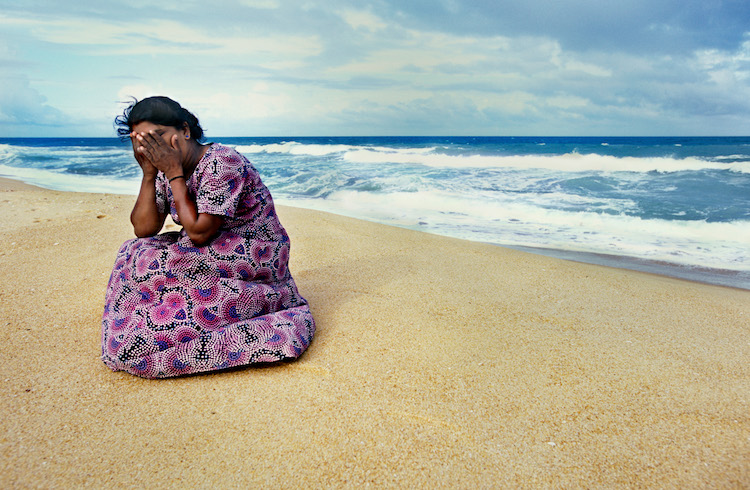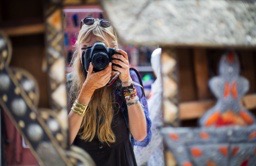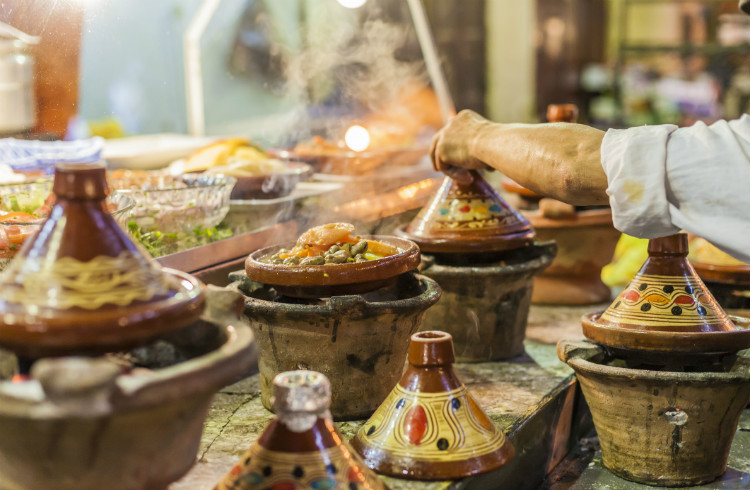Understanding Street Photography
Pro photographer Craig Boehman shares his tips for photographing people on the street.
 Photo © Craig Boehman
Photo © Craig Boehman
Street photography can be nervewracking at times, even in familiar places. But what about when you’re traveling to countries where city populations routinely top 10 million? Here are some of the things I have learned while photographing people in the Indian Subcontinent.
Know where you're going
Destination research is vital, especially when traveling to developing countries where safety may be a primary concern. Hire a guide and read up extensively before setting foot in a place, especially if there are any safety issues, or where photography by visitors is not welcomed.
You can also use Google Maps to figure out a route to follow before you arrive. Think about what you want to capture before you get there. Where do people gather? Are there any festivals that would provide some great photo opportunties?

Choose the right kit
I’d recommend a full frame or APS-C mirrorless system [smaller than a DLSR and you can see the photo on the digital monitor] with a 35mm prime lens [the opposite of a zoom lens] or equivalent. A camera with a telephoto lenses such as the 16-35mm or 24-70mm would also suffice. The prime lenses are smaller, while the telephoto lenses are bigger, but will allow a greater range of shots. It's all about balancing size vs. power; and of course, your budget.
Mirrorless systems are generally easier to safeguard against theft in crowded areas than DSLRs due to their smaller size. Keeping them close to your body, either in your hand or around your neck, is recommended.
Mirrorless systems have a number of other advantages over DSLRs:
- You can see the exposure in real time before you click the shutter
- The ability to see the frame on the digital monitor instead of having to put the viewfinder up to your eye
- Generally, more technology inside to allow for greater photographic freedom.
Blend in
It’s a daunting task to blend in when you’re the visitor. In some instances, it may even be impossible. Here are a few tricks I’ve learned in Mumbai and Kolkata.
- Don’t hesitate. Once you determine who your subject is, immediately frame-up and take the picture.
- Immerse yourself. The opposite to acting fast is to spend as much time at the scene as possible in order to capture your subject once he or she loses interest in you.
- Don't make eye contact. If your subject is looking at you and you still want that frame, look above or to the side of your subject and click the shutter button. More often than not you'll see them turn to figure out what you were photographing behind/beside them, and you can get a profile shot.

Understand the ethics
For practical considerations, the ethics of street photography often boils down to how comfortable you are photographing people, balanced with the legality of public photography in the country you are shooting. [For example, in the United Arab Emirates, it's illegal to take photos of people without their permission].
When you are in a place where it’s legal and safe to practice street photography, it’s relatively easy to ask permission to photograph someone who doesn’t speak your language. Simply make eye contact and mime taking your subject’s picture with your camera; ask “Photo?”; Smile. Smiling goes a long way to transcend language. Simply taking someone’s picture with an acknowledgement and a smile is generally acceptable. Of course asking permission isn't always possible and unless someone explicity asks you not to take their photo or seems uncomfortable in front of the camera, it's generally fine to snap away.

Kolkata, India. Over time, my comfort level grew so that I was no longer only taking pictures of the railroad colony from the blue bridge in the distance. Photo: Craig Boehman.
Tell stories
People’s routines make great storytelling devices for photo essays. Look for people doing day-to-day activities which involve repeating actions such as a fruit seller working at a stall or someone washing clothes in a river.
- Capture the beginning, middle, and end of any scene or cycle. Every good story has these three elements.
- Get in close. Make sure to capture facial expressions, hands or feet – elements which help to add emotion or expression. You can also include objects which have special meaning for your subject.
- Find and shoot a header image: one frame which will represent your entire photo essay.
- Imagine you are shooting for your favorite publication. What kind of shots would editors be looking for? Determine what those shots would be and take them.
Look for strong foreground-background relationships. Photo essays with literal depth will help keep your audience interested.

Related articles
Simple and flexible travel insurance
You can buy at home or while traveling, and claim online from anywhere in the world. With 150+ adventure activities covered and 24/7 emergency assistance.
Get a quote


No Comments